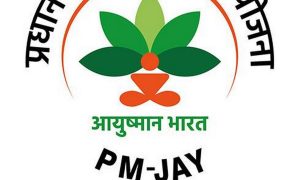According to bank officials, current and savings bank (CASA) deposits declined during the quarter. SBI’s CASA deposits fell to Rs 19.41 lakh crore from Rs 19.14 lakh crore in March 2024.
With deposit growth slowing down, banks are racing to mobilise funds through special deposit schemes and other innovative plans to meet the credit demand in the system. Many banks have reported a decline in deposits during the quarter ended June 2024 as customers are now looking at alternative avenues like the capital markets to park their funds for better returns.
Read More:- FPIs Turn Net Sellers; Pull Out Rs 21,201 Crore From Equities In Aug So Far
State Bank of India (SBI), India’s largest bank, registered a fall in deposits to Rs 49.01 lakh crore in the June quarter of FY25, compared to Rs 49.16 lakh crore in the March 2024 quarter. Bank of Baroda reported a fall in deposits from Rs 13.26 lakh crore to Rs 13.06 lakh crore in the June quarter. Other banks also reported a similar trend during the June quarter.
Among private banks, HDFC Bank’s deposit base remained flat at Rs 23.76 lakh crore on a sequential basis in June 2024.
According to bank officials, current and savings bank (CASA) deposits declined during the quarter. SBI’s CASA deposits fell to Rs 19.41 lakh crore from Rs 19.14 lakh crore in March 2024. “The decline in deposit growth has forced some banks to raise deposit rates in certain buckets. Credit growth is now outpacing deposit growth. Customers are now focusing more on the capital market where returns are far higher than bank deposits. They were seen breaking fixed deposits to invest in mutual fund schemes,” said a bank official.
Read More:- Sensex, Nifty end higher to snap two-week losing streak; Wipro gains 4%
The Reserve Bank of India’s (RBI) latest data shows that credit growth rose by 15.1 per cent as of July 2024, compared to 14.6 per cent on a year-on-year basis. However, deposit growth declined to 10.6 per cent from 12.9 per cent a year ago.
SBI Chairman Dinesh Khara said that the current phase of credit growth outpacing deposits is temporary. “We have seen that when alternative options are available, people have gone to markets but bank deposits remain the channelling source. We had a similar situation in 2007 when loans outpaced deposits, but it was a temporary phenomenon which we should be able to navigate with our investment book,” he said while unveiling the bank’s quarterly results last week.
Read More:- Attention Taxpayers! CBDT initiates investigation into foreign remittances surpassing Rs 6 lakh
Banks launch special deposit schemes
In order to mobilise higher deposits, banks have been launching special term deposits. Recently, lenders such as SBI, Bank of Baroda, Bank of India, Bank of Maharashtra, RBL Bank, and Bandhan Bank have launched special retail deposit schemes. Banks are also focusing on niche segments for deposit mobilisation. In July, SBI launched ‘Amrit Vrishti’—a scheme that offers 7.25 per cent interest on deposits for 444 days. Bank of Baroda also launched the ‘Monsoon Dhamaka’ deposit scheme, offering interest rates of 7.25 per cent for 399 days and 7.15 per cent for 333 days.
Amid concerns over the shift of household savings from banks to alternative investment avenues, resulting in slower deposit growth compared to credit, RBI Governor Shaktikanta Das recently asked lenders to garner deposits through innovative product offerings and use their wide branch network.
Alternative investment avenues are becoming more attractive to retail customers, and banks are facing challenges on the funding front with bank deposits trailing loan growth, he said. “Banks are taking greater recourse to short-term non-retail deposits and other instruments of liability to meet the incremental credit demand,” Das said.
Govt’s focus on small deposit mobilisation
Last week, Finance Minister Nirmala Sitharaman asked banks to take the old-fashioned route to bring back focus on mobilising “small deposits” and not just big deposits in order to reverse the slowdown in deposit growth rate.
“It’s right that credit is going through digital format and collection of deposits is not. Huge big deposits have always been a very lazy banker’s job, but the trickles which come are going to be the bread and butter money to lend regularly. So that trickle (small deposit mobilisation) was the emphasis a long, long time ago…the requisite small deposits, that’s also one of the very critical jobs of the bank. It might be grinding monotony but that’s where your bread and butter lies,” she said.
Read More:- Bank Fees: Here’s What You PAY For Not Maintaining Minimum Balance
However, slower growth in deposits has led to an increase in the cost of funds for banks, which has forced banks to raise their lending rates. Recently, SBI raised its marginal cost of funds (MCLR) by 10 basis points (bps) across all tenors. In the last three months, SBI has raised MCLR by up to 30 bps in some of the tenors.
Mutual funds vs. bank deposits
Analysts said equity schemes of mutual funds had given four to five times more returns than bank deposits, prompting people to focus on the capital market for higher returns. After adjusting for inflation, they were hardly getting two or three per cent returns from bank deposits. Mutual fund players said that the notion that the slowdown in bank deposits due to higher subscription to mutual funds seems to be misinformed. They said that the shift of money from bank deposits to mutual funds will not affect banking system liquidity as the money remains in the banking system.
Also Read– Forex Update: India’s Foreign Exchange Reserves Fall $4.8 Billion to $670.11 Billion
“Prima facie it seems that bank deposits and mutual funds are competing with each other, but there will be no impact on the banking system liquidity because of money flowing into mutual funds,” said Sandeep Bagla, Chief Executive Officer (CEO) of Trust Mutual Fund.
He attributed strong returns, ease of investing, the ability to invest regularly in the market through systematic investment plans (SIPs), and growing awareness among retail investors as the primary reasons for higher retail participation in mutual funds.
“In the last seven years, the returns from equity markets and equity-oriented mutual fund schemes have been very strong and so people are looking to earn those returns and are investing in mutual funds. The fact that one can invest regularly in the market at all levels through SIPs has also resulted in a lot of savings moving into SIPs,” Bagla said.
Read More: Good News For Indian Customers In UAE, Emirates’ Merchants Now Accepting Rupee Via UPI
The data from the Association of Mutual Funds in India (AMFI) showed that the contribution of systematic investment plans (SIPs) touched an all-time high of Rs 23,332 crore in July. The net assets under management of the mutual fund industry grew by 6.23 percent to touch a record high of Rs 64.97 lakh crore as of July 31, 2024.





































